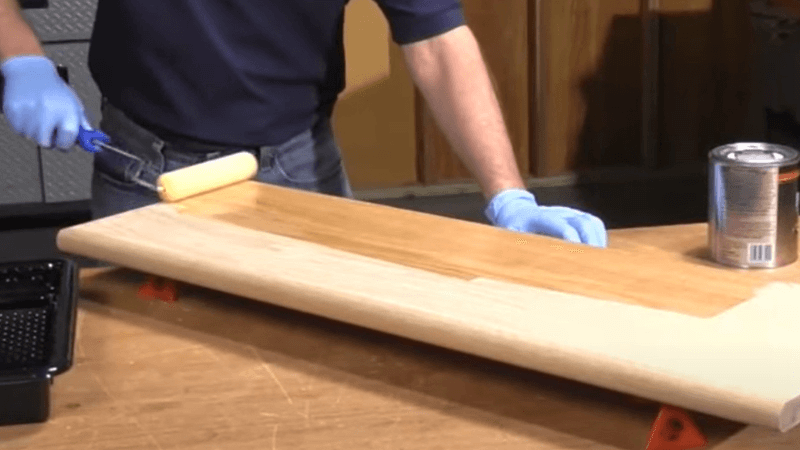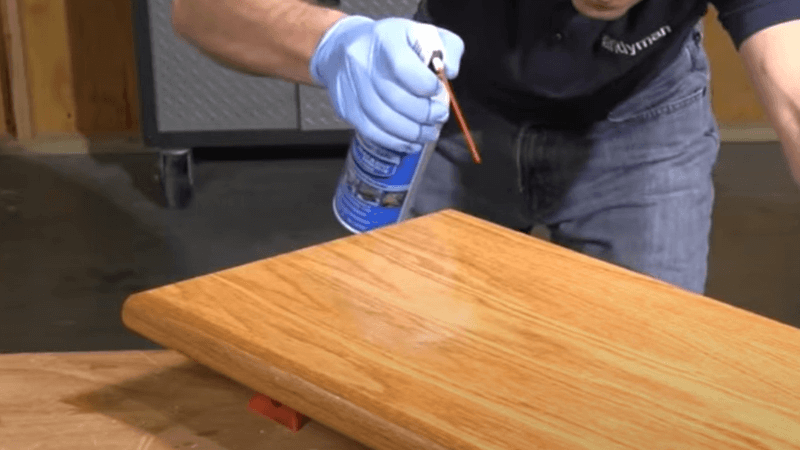When applying poly on large surfaces using a brush can take forever. A better option is to use a more efficient tool, such as a roller. Upon searching for information on YouTube, you may notice that many professionals who use a roller for application are using water-based polyurethane. This leads to the question of whether you can use a roller to apply oil-based polyurethane.
Quick Answer
Yes, you can use a roller to apply oil-based poly. This method is faster and results in a smooth, brush-mark-free finish. (see more wood-finishing tools you could use)
Here is more on applying oil-based poly with a roller.
Advantages of Rolling Oil-Based Poly
There are numerous advantages of using a roller to apply your Poly. The most significant advantage is speed. Rollers cover a larger surface area than brushes, allowing you to spread the polyurethane more quickly.

Brushes are notorious for leaving marks that later dry up to form bumps. With a roller, you get a smoother finish without the worry of brush marks. However, it’s important to note that sanding between coats is still necessary to ensure a smooth and even finish.
Should you sand between coats when using a roller?
It’s always a good practice to sand between coats of poly whether using a brush, T-bar, or roller. Sanding helps take care of little imperfections on the surface of the finish.
As Bob Flexner points out in Understanding Wood Finishing sanding helps to eliminate any imperfections on the surface and prevents them from being amplified in the next coat.
It is important to note that the goal of sanding is to smooth the surface, not to remove the previous coat entirely.
What to expect when rolling Oil-Based Poly
Drips and sags may occur especially near the edges, but these can be taken care of using a brush so keep one close by.
Rollers especially foam rollers are notorious for leaving your coat with bubbles. But do not panic the bubbles will mostly resolve on their own after a short while. However, if bubbles persist use a shot of canned air to burst them, but be careful as this can also distort the finish.

How to Avoid Bubbles when rolling Oil-Based Poly
To prevent bubbles in your finish, follow these tips:
- Apply thin light coats
- Dont work the surface any more than you have to
- Roll the foam roller in one direction only
- Keep the roller loaded with enough poly, but not too much
- Keep the roller clean and free of debris
- Allow adequate drying time between coats
- Avoid rolling over drips or pools of poly
- Apply gentle, even pressure when rolling
Conclusion: Can you apply oil-based polyurethane with a roller?
In conclusion, rolling oil-based polyurethane with a foam roller can be an efficient and effective way to achieve a smooth, brush-mark-free finish. Following our tips outlined above, you can avoid the issue of bubbles with your oil-based polyurethane and create a professional-looking finish.
It is paramount to note the essence of sanding between coats and allowing adequate drying time to ensure the best outcome. With the right techniques, rolling oil-based polyurethane with a foam roller can be a time-saving and satisfying project.
Recommended Reading